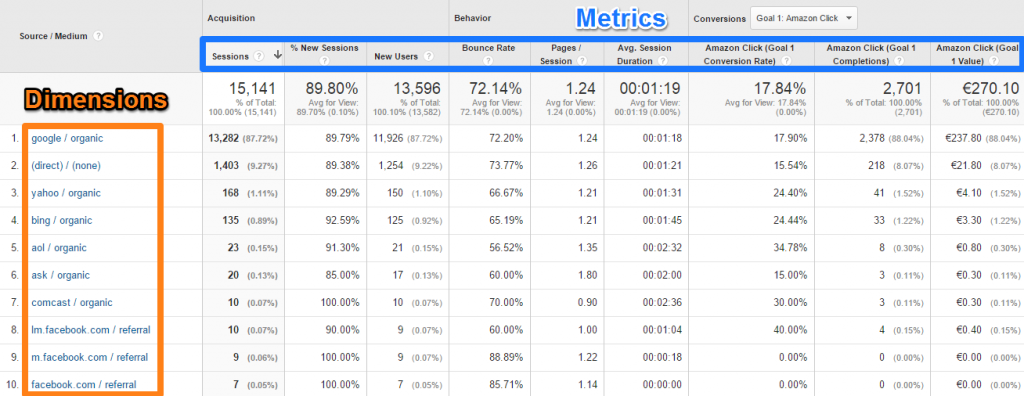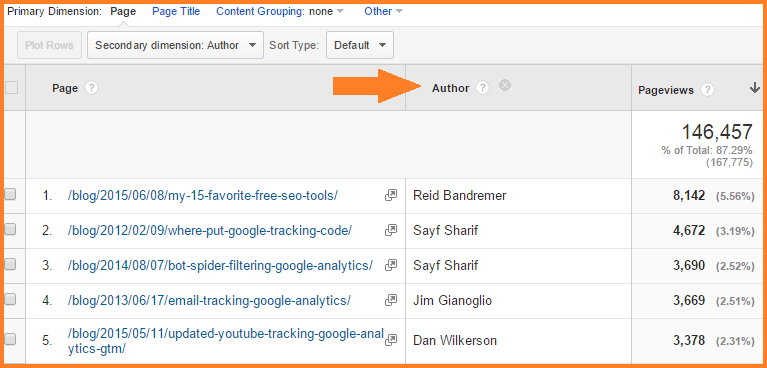Transform Your Analytics Strategy With Additional Dimension in Google Analytics
Exploring the capacity of additional dimensions in Google Analytics opens up a realm of possibilities for organizations seeking to elevate their analytical method. By integrating secondary measurements into information evaluation, a new layer of insights emerges, clarifying complex individual actions and communications. This advanced degree of analysis not just fine-tunes advertising and marketing approaches yet likewise deciphers hidden possibilities for optimization and growth. The strategic application of secondary dimensions holds the essential to opening a gold mine of invaluable info that can change exactly how organizations act and interpret upon their data.
Recognizing Secondary Dimensions in Google Analytics
Secondary measurements in Google Analytics supply extra context to primary data by allowing individuals to examine metrics across a 2nd dimension, using deeper understandings right into user actions and communications on a website. Secondary Dimension in Google Analytics. While key measurements offer basic information points such as pageviews, bounce rate, and session duration, secondary dimensions supply a more in-depth sight by segmenting the key information additionally. This segmentation permits users to examine metrics in combination with one more measurement, such as website traffic resources, demographics, or user habits
Advantages of Making Use Of Second Dimensions
Utilizing additional measurements in Google Analytics offers a calculated benefit by enhancing the depth of evaluation and giving a more detailed understanding of user communications and actions on a web site. By incorporating additional measurements, analysts can obtain valuable insights right into the efficiency of certain segments or variables within their data. This makes it possible for a much more thorough evaluation of customer habits beyond surface-level metrics, permitting a deeper exploration of the variables influencing individual interaction and conversions.

How to Apply Secondary Measurements
When including additional dimensions in Google Analytics, one crucial step is to select the relevant metrics and dimensions to improve the analysis procedure. To execute additional dimensions successfully, start by accessing your Google Analytics account and browsing to the record you intend to enhance with added data. As soon as in the record, find the "Secondary Measurement" button, normally found above the information table. Clicking on this button will certainly open a drop-down food selection listing numerous dimensions that can be added to your primary dimension for much deeper insights.
After picking the appropriate secondary dimension, such as 'Source/Medium' or 'Gadget Category,' Google Analytics will certainly present the information in a more comprehensive layout, enabling you to cross-analyze various elements of individual actions. Keep in mind to experiment with various combinations of primary and second measurements to uncover important patterns and trends that can educate your advertising and marketing strategies. By implementing second dimensions attentively, you can obtain a more thorough understanding of your web site or app efficiency and make data-driven choices to optimize your digital presence.
Analyzing Data With Second Measurements
Improve your information analysis in Google Analytics by integrating second measurements to dive deeper into user actions patterns and optimize your electronic advertising and marketing techniques successfully - Secondary Dimension in Google Analytics. By including secondary dimensions to your primary data, you can obtain valuable insights that can help you make educated choices regarding your internet site or application performance
Analyzing information with additional measurements enables you to segment your primary information even more, providing a much more detailed sight of customer interactions. Combining the key dimension of 'source/medium' with an additional dimension like 'touchdown page' can disclose which details pages are driving web traffic from different sources. This details can be critical in refining your content approach or enhancing your ad campaign to increase conversions.
Moreover, utilizing additional measurements enables you to determine correlations in between different metrics, assisting you recognize the influence of various variables on individual habits. Whether it's assessing demographics together with user involvement metrics or gadget categories with conversion prices, second measurements encourage you to reveal covert patterns and patterns that can lead your marketing efforts.
Optimizing Performance With Secondary Measurements
To enhance the performance of data analysis and decision-making in Google Analytics, incorporating secondary measurements is crucial to enhancing efficiency metrics and getting much deeper understandings more helpful hints into customer behavior patterns. By using secondary measurements, experts can dive past surface-level information and reveal beneficial connections that may otherwise go unnoticed. This optimization technique enables services to customize their marketing efforts better, identify areas for improvement in internet site usability, and enhance overall customer experience.
Additional measurements offer an even more comprehensive view of individual interactions by giving extra context to primary data metrics. For instance, matching the main dimension of 'touchdown web page' with a second dimension like 'tool classification' can disclose whether particular devices are most likely to drive involvement on details touchdown web pages. This understanding can educate responsive layout improvements or targeted advertising and marketing techniques to boost efficiency.

Verdict
In verdict, the integration of second measurements in Google Analytics provides companies with an effective tool to improve their analytics technique. Secondary Dimension in Google Analytics. By diving deeper into individual actions and communications, marketing professionals can discover valuable understandings that can drive efficiency optimization and improve the general individual experience. Leveraging second dimensions enables a more detailed evaluation of data, bring about more informed decision-making and customized advertising efforts
Additional measurements in Google Analytics offer additional context to key data by permitting individuals to analyze metrics across a second measurement, using deeper understandings into customer habits and communications on a site. While key dimensions give fundamental information points such as pageviews, bounce rate, and session period, secondary measurements offer an even more comprehensive view by segmenting the primary data additionally.One of the essential benefits of utilizing click now secondary dimensions is the ability to discover connections and patterns that might not be additional resources quickly noticeable when assessing information with main measurements alone.When incorporating second dimensions in Google Analytics, one crucial step is to choose the pertinent metrics and measurements to enhance the evaluation procedure. Matching the main dimension of 'touchdown page' with a second dimension like 'tool classification' can reveal whether specific tools are a lot more likely to drive interaction on details touchdown web pages.